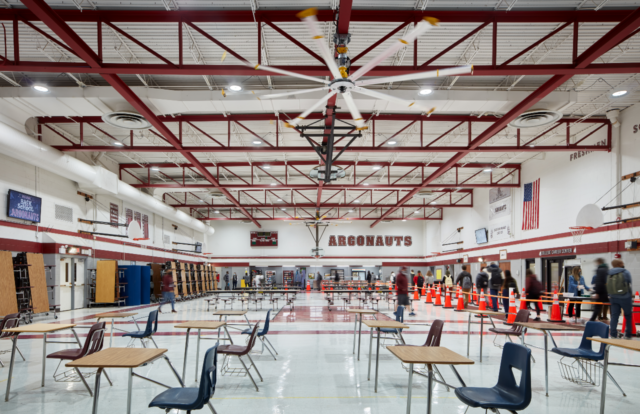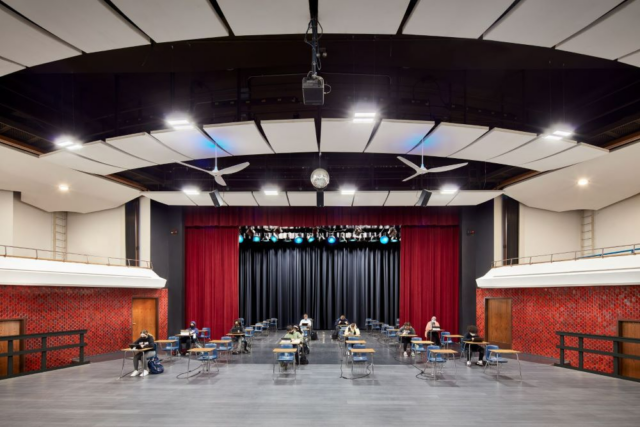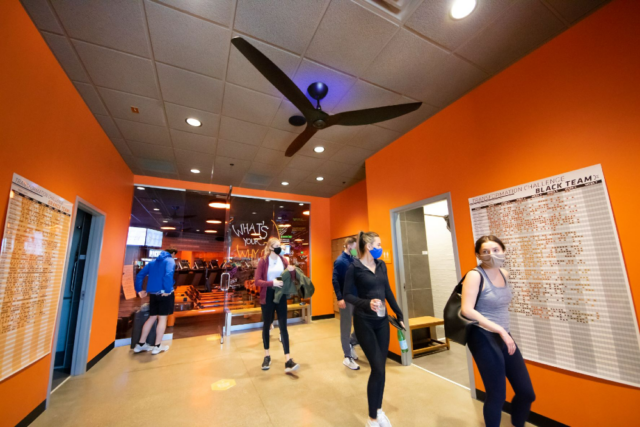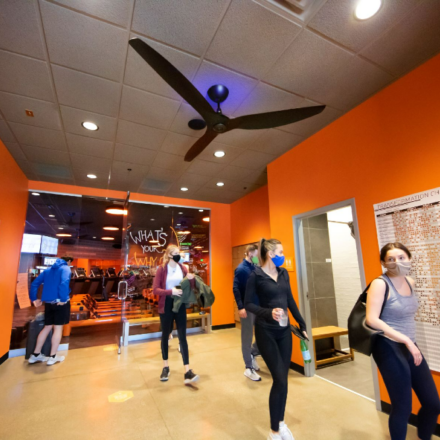By Russ Banham
Business was booming for Big Ass Fans through 2019 and into the first quarter of 2020 when the maker of large industrial fans posted record revenues and profits. “We were on an absolute tear,” says CEO Lennie Rhoades. The company sold its products to 85% percent of the Fortune 500 and in more than 175 countries.
A month later, customer demand fell off a cliff when it was incorrectly reported that ventilation fans spread COVID-19 particulates through the air, increasing the risk of infection. Scientific evidence compiled by the Centers for Disease Control and Prevention (CDC) later concluded that ventilation by properly placed fans actually reduced this hazard—too late, however, for Big Ass Fans. “We went from a record first quarter to a 50% collapse in sales in April,” says Rhoades.

Longtime customers like Amazon, whose giant distribution warehouses deploy the fans for ventilation, stopped taking sales calls. “We did almost $20 million in business with Amazon in 2019,” says Rhoades. “Not only did they stop buying fans from us, they turned off all the fans they had. So did Toyota and other customers. It was an existential threat.”
Over the next few days, more than 100 people, one-fifth of the Big Ass Fans workforce, were laid off, the toughest decision Rhoades has ever made, he says. Planned salary increases, bonuses and 401(k) matches were shelved. Unsure if it would survive, the private equity-backed company hoarded as much cash as possible.
“We went into survivor mode,” says Eric Evans, Big Ass Fans’ CFO. “Lennie and I discussed a scenario of `bare-bones’ staffing, who we needed to keep the lights on until the disaster passed, such as `these four people in R&D’ and `those five people in sales’ and `these three people in finance.’ Fortunately, we didn’t need to go there.”
A remarkable turnaround lay ahead for Big Ass Fans, one that in hindsight was as stellar as it was serendipitous.
A new LED technology
In April 2020, the ax had fallen on Big Ass Fans’ sales and prospects. The Lexington, Kentucky, manufacturing plant ground to a halt, the layoffs commenced and office workers were told to work remotely from home “to the extent there was any work to do,” says Rhoades.
During the fallow period, Kevin Young, director of sales and marketing at the company, received a phone call from Fern Campos, aviation director of maintenance at The Walt Disney Company. “We’d done business over the years with Disney both on the theme park side and in aviation, where our big industrial 24-feet overhead fans circulated the air in their airplane hangar,” Rhoades says.
Campos related to Young that Disney’s aviation maintenance staff was using small portable bipolar ionization fans to clear out the interior of the Gulfstream jets parked in the hangar. The fans purified the air inside the jets, electrically charging the air molecules to remove odors, microbes and other possible contaminants—a nice thing to have during a pandemic-induced falloff in air travel. Bipolar refers to the technology’s splitting of air molecules into positively and negatively charged ions.

“Fern asked Kevin if we’d ever thought about using bipolar ionization in our industrial fans; the answer was no,” says Rhoades. “Then Kevin called me.”
Rhoades instantly began a search on bipolar ionization, reading scores of academic papers on the subject. “I called up our head of R&D and said, `Have you heard of this? There may be something to this,'” he says.
Rhoades read up on other innovative air sterilization techniques. “Stuck at home with the company in shutdown mode, I had little else to do,” he jokes. “That’s when I learned about this new LED technology putting out high ultraviolet light wavelengths that could disable viruses.”
He’s referring to UV-C radiation, a known disinfectant for water and air environments. In scientific testing, UV-C radiation destroyed the outer protein coating of COVID-19, inactivating the coronavirus. By combining bipolar ionization and UV-C wavelength LED lighting and embedding the technology inside fans, Rhoades felt he’d struck the mother lode. “We pivoted quickly in reengineering our fans with the new technology,” he says.
Blowing out expectations
Rhoades subsequently reached out to an independent laboratory, Innovative Bioanalysis, to test the efficacy of the new fan, the Haiku UV-C, in fighting off COVID-19. The lab’s aerosol tests suggested a 48% reduction in airborne COVID-19 in five minutes time and an estimated 86% decrease at 10 minutes. Within 20 minutes, 99.9% of the virus was neutralized. Fans that heretofore were used to ventilate rooms and keep people cool could also keep them safe. “With hard work, good thinking and great science, we turned an existential risk into a business opportunity,” Rhoades says.
Within a 12-week period, the Haiku UV-C was commercialized. Disney’s aviation group was one of the first buyers of the advanced virus-killing technology, which was embedded into its existing hangar fans. “[It] minimized chemical exposure during cleaning and maintenance processes at the hangar, while cutting down on labor time, saving us more money than we had hoped,” says Campos, adding that the combination of a COVID-19 exposure reduction and a labor reduction was a “`one-two punch’ delivering better results than we thought possible.”

Customers started taking sales calls again. New markets like education and healthcare joined more traditional markets like fitness centers, factories and distribution centers in buying scores of the new fans. Others asked for the novel technology to be embedded in their existing fans.
“We rocketed back,” says Evans, noting that for years the home page on his computer featured a black circle with the number 30 in yellow inside it. “I had told Lennie that when we reached $30 million in sales a month, we will have cracked the code. In July 2021, we did it with all cylinders firing.”
Like a phoenix, Big Ass Fans rose from the ashes to generate record revenues, profits and cash flow. Evans deleted the big black circle with the number 30 in yellow from his computer screen. Roughly half the laid-off workers were rehired.
Reaping the rewards
In July, Big Ass Fans was sold by private equity firm Lindsay Goldberg to Madison Industries (for an undisclosed sum) to become a part of its indoor air quality vertical business unit. Helping to bring the transaction to fruition was Evans’ ability to forecast positive financial returns going forward.
“We put in a lot of work developing in-house data and analytics that made it easy to analyze in detail what was going on at the customer level, product line level and geographic level,” he explains. “We’d also deployed accounting automation solutions from BlackLine that gave us structure and rigor as a finance department to move quickly and effectively towards consummating the transaction.”
Looking back at what has been a Disneyesque roller coaster of a ride, Rhoades extolled the close business relationship of Campos and Young. “Had not they shared that conversation, we might still be down on our luck,” he says. For Big Ass Fans, the “place where dreams come true” came through as advertised, in the nick of time.
Lead photo courtesy of Big Ass Fans

